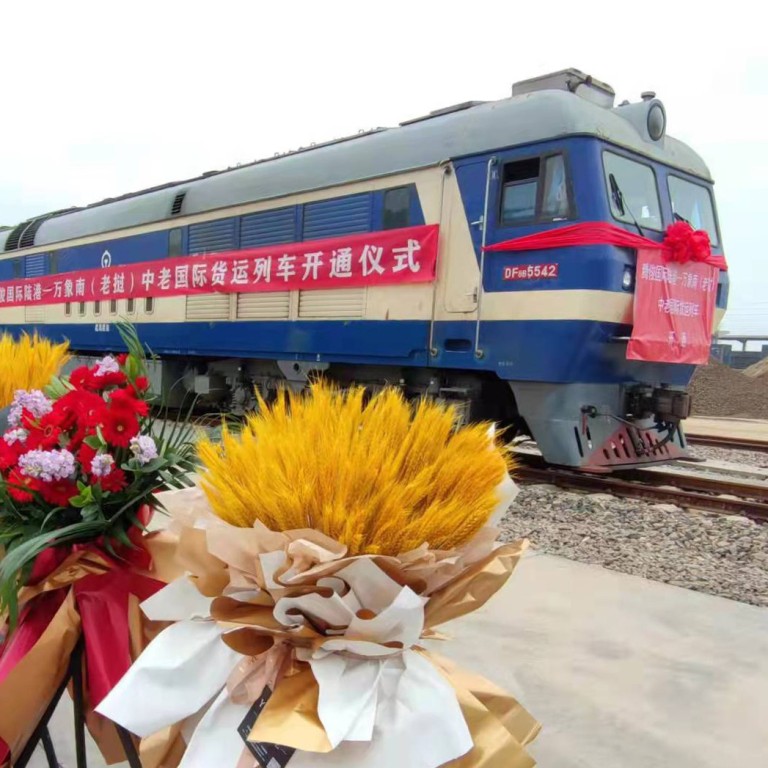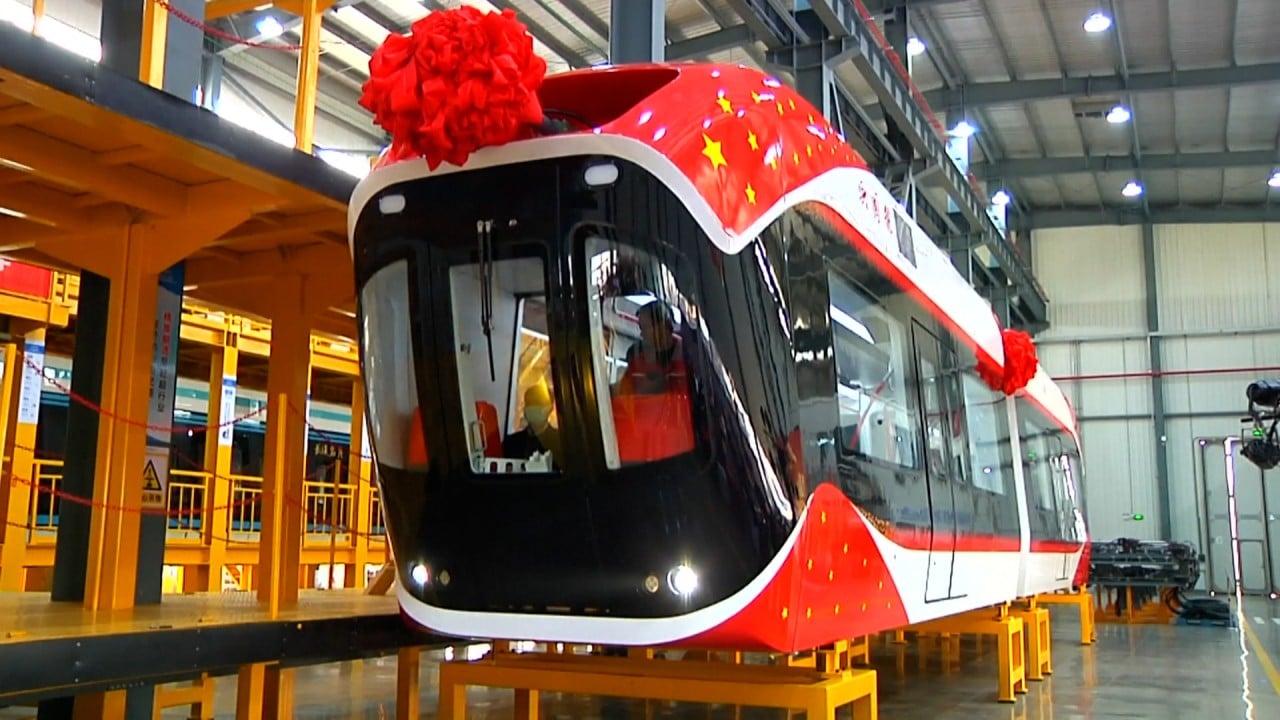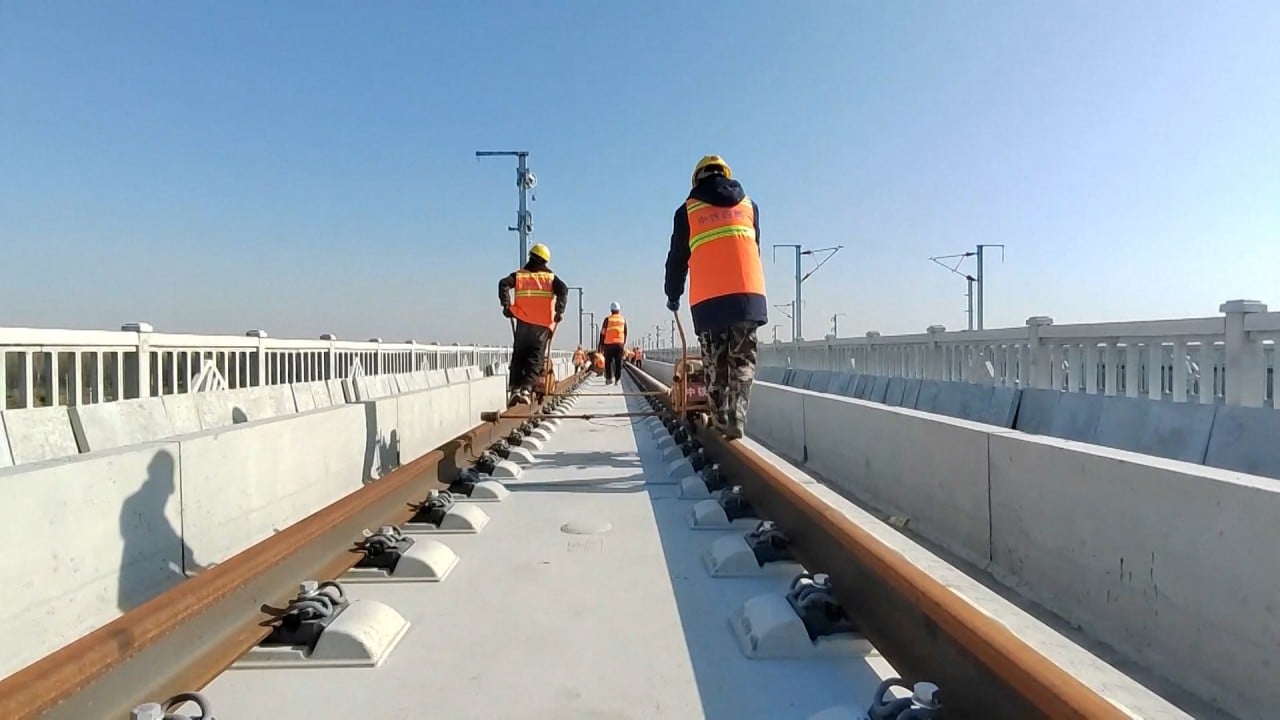
Full steam ahead for Chinese rail diplomacy?
- A freight rail link to Laos that opened earlier this month is the latest effort to boost land connectivity with Southeast Asia and other important trading partners
- Observers say such networks can help China boost its international profile – but may also help bypass increasing tensions in major shipping routes
China has launched a new freight rail route from a manufacturing and export hub on the east coast to Laos in the latest example of “railway diplomacy”.
“The goals are quite simple – the export of Chinese standards, facilitating the going global of Chinese capital and industries, and helping solve domestic issues related to overcapacity,” said Karl Yan, an associate professor with Zhejiang University.
Dragan Pavlicevic, an associate professor with Xian Jiaotong-Liverpool University, said Beijing was looking to improve China’s international profile by exporting railway technology.
Rare earth producer JL Mag expects boost from China’s growing NEV sector
“It was also meant … to showcase China’s support for the development and growth of others through development of infrastructure, promotion of trade, and investment, transfer of its technology and know-how and others,” he said. “One could say that railway projects in that sense are also meant to contribute to China’s soft power.”
Since the pandemic, dozens of freight rail routes have been established between China and Southeast Asia, now a major market for Chinese exports, with some provincial governments investing in rail links.
In March, the central province of Hunan began a rail freight service to Hanoi via the region of Guangxi.
For the past three months a weekly rail freight service to the Vietnamese capital has been leaving from Haian, in the eastern province of Jiangsu, to “provide more efficient and stable logistics access for exporters in Yangtze Delta and coastal region”, Luo Qiang, a deputy manager for the Haian railway’s logistic base, told Xinhua Daily.
The 1,035km (643-mile) China-Laos railway began operating soon after Chinese President Xi Jinping and his Laotian counterpart Thongloun Sisoulith jointly announced the opening at the start of the month.
The first cargo to leave Yiwu, a major export hub outside Shanghai, saw 70 containers, packed with goods including textiles, household appliances, mechanical components and fertiliser, set off on December 14.
The train also carried 32 containers of potash fertiliser shipped earlier from Uzbekistan through the China-Europe Railway Express, China News Service reported.
The train travelled to Kunming, the capital of the southwestern province of Yunnan, before reaching Mohan, a Chinese border town, from where it travelled on to Vientiane, the capital of Laos, arriving on December 21.
Meng Wei, a spokeswoman from the National Development and Reform Commission, said that once the China-Laos railway linked up with the Thai rail network, it would give Southeast Asian countries greater access to the Chinese market, and even to Europe through the China-Europe Rail Express.
“It has become very difficult to push forward belt-and-road-related projects by sea because of the maritime tensions,” the observer said. “Going by land instead could also avoid possible blockage at the sea, and that’s why the China-Europe Rail Express now is linked to Shanghai, even though it is traditionally a port city.”
In the case of Southeast Asia, most of China’s trade is still conducted by sea. Even for a landlocked country like Laos, as recently as 2016 only 1.6 per cent of its trade with China came via land.
Meanwhile, the China-Europe Rail Express has relied on heavy subsidies from Beijing since its launch in 2011.
According to China State Railway Group, the China-Europe Railway Express now has 73 freight routes connecting 174 cities in 23 European countries.
In the first 11 months of this year, 13,817 freight trains ran from China to Europe, delivering more than 1.33 million containers, a 30 per cent increase on the same period last year.
On Monday, a Vietnamese customs official suggested that local exporters should consider switching to rail freight after China tightened its border controls with Vietnam to stop Covid-19 spreading.
More than 2,100 lorries were stuck in Lang Son on the Guangxi border as of Monday, Vietnamese news portal Vnexpress.net reported.
“Railways are very convenient in the context of China’s current zero-Covid policy because they do not involve people. The whole train only has an operating crew,” Nguyen Huu Vuong, deputy director of the Lang Son Customs Department was quoted as saying.
There are also plans to extend a new line carrying goods from Haidong in the northwestern province of Qinghai and the Zhangmu checkpoint in Tibet to the Nepalese capital Kathmandu. Work started on a feasibility study after a visit by President Xi Jinping to Nepal in 2019, although there has been little sign of progress since then.
But observers said it remains to see how far the boom, partly fuelled by the pandemic, could last when ocean shipping, which is usually cheaper than rail freight, is restored and when government subsidies are phased out.
Pavlicevic said an imbalance in trade flows between China and Europe was a major challenge to making the rail link sustainable.
Why Russia wants to usurp Australia as China’s top iron ore supplier
“Much more is exported from China than is imported into China via this railway corridor,” Pavlicevic said. “While the containers on outbound trains are full, many on the inbound ones are empty, and this has a negative impact on the overall economics of this logistic corridor, and the prospects for the logistic sector.”
Since Beijing started its railway diplomacy push in 2011, several projects have been hit by delays, accusations of trapping host nations in debt, and local concerns that the inflows of Chinese workers will cause locals to miss out on jobs.
In one of the latest setbacks, Bangladesh said two weeks ago that it was looking for fresh funds for two railways projects – the conversion of the Akhaura-Sylhet line and the construction of the Joydebpur-Ishwardi line. Both projects were agreed to during Xi’s visit to Dhaka in 2016 but Bangladesh has since cut the budgets for the deals and two Chinese state-owned companies have pulled out.
Pavlicevic said financial sustainability remained the key to China’s railway diplomacy, particularly as governments would have to be more cautious after the pandemic, but Beijing had a long way to go in tackling negative perceptions about its railway diplomacy.
“The narratives of debt-trap and the influence-building on the back of state-to-state infrastructure projects delivered by China are increasingly influencing, possibly dominating, international perceptions of China’s overseas infrastructure projects, railways included,” he said.



